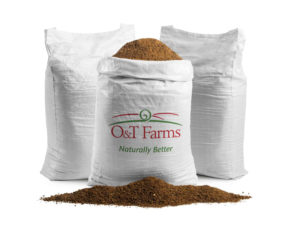The dairy industry is undergoing a significant transformation, with artificial intelligence (AI) at the forefront of this revolution.
Health monitoring is one of the most impactful applications of AI in dairy farming. Advanced AI systems can detect early signs of disease, potentially saving farmers thousands of dollars in treatment costs and lost productivity. Lameness, a significant issue in dairy herds, can now be detected with 75% to 85% accuracy using AI-powered video analysis and accelerometer data. This early detection allows for prompt intervention, improving animal welfare and reducing economic losses. Similarly, AI excels in monitoring for mastitis, a costly condition for dairy farmers. By analyzing udder temperature, milk composition and herd data, AI systems can predict the onset of mastitis before visible symptoms appear. While these systems may generate some false positives, their high predictive power offers a valuable tool for proactive herd management.
The use of AI for reproductive management is also revolutionizing the industry. By analyzing various data points, including behavioural patterns and physiological indicators, AI can predict optimal breeding times with greater accuracy than traditional methods. This precision can lead to improved conception rates and more efficient breeding programs.
Feed optimization, using AI-driven systems, can help farmers optimize feed formulations and feeding strategies. By analyzing factors such as milk production, animal health data and even market prices, these systems can recommend the most cost-effective and nutritionally balanced feed options. A study by McKinsey & Company suggests that better monitoring of animal health and growth conditions through AI could generate $70 billion to $90 billion in value (output and productivity improvement) by 2030. This substantial increase in value is largely attributed to optimized feeding and health management strategies.
Resource management and precision agriculture, powered by AI and big data, is transforming resource utilization on dairy farms. From water usage to energy consumption, AI helps farmers make data-driven decisions that reduce waste and improve sustainability. For instance, AI can analyze weather patterns, soil moisture levels and crop growth data to optimize irrigation schedules, ensuring that water resources are used efficiently. This not only reduces costs but also aligns with growing environmental concerns in the industry.
AI's predictive capabilities extend to milk production forecasting. By analyzing historical data, current herd health, feed quality and environmental factors, AI can provide accurate predictions of milk yield. This allows farmers to better plan their operations and make informed decisions about herd management. According to the World Economic Forum, farms using AI-based solutions can see a 10%-20% increase in milk production and a 15%-25% reduction in operating costs. These significant improvements demonstrate the tangible benefits of AI adoption in dairy farming.
AI is also making strides in milk quality control. Advanced sensors and AI algorithms can analyze milk composition in real time, detecting anomalies that might indicate health issues or contamination. This rapid analysis helps maintain high-quality standards and can prevent entire batches of milk from being compromised.
One of AI's most powerful applications is its ability to analyze vast amounts of farm data quickly and effectively. Connecterra's Copilot, for example, analyzes all farm data within minutes and provides weekly summaries of changes that require attention. This capability allows farmers to spot trends and anomalies that might otherwise go unnoticed. In one case study, a dairy farmer in Wisconsin used this feature to identify an unexpected decrease in milk production for cows in the one-to-seven-days-in-milk (DIM) group. This early detection of issues allows for prompt intervention and can prevent significant losses.
AI is not limited to biological aspects of dairy farming; it also plays a crucial role in equipment management. Predictive maintenance algorithms can analyze data from farm machinery to forecast potential breakdowns before they occur. This proactive approach minimizes downtime and reduces repair costs, contributing to overall farm efficiency.
While the benefits of AI in dairy farming are substantial, implementation comes with challenges that farmers should consider. Adopting AI technologies often requires training and adaptation. Farmers should evaluate the time and resources needed for successful implementation. As AI systems collect and analyze vast amounts of farm data, ensuring data privacy and security becomes crucial. Farmers should understand how AI vendors handle and protect their data. While AI can lead to significant cost savings in the long run, the initial investment can be substantial. Farmers should carefully assess the return on investment for their specific operations. Managing false positives and ensuring system accuracy is vital for maintaining trust in AI technologies. Farmers should work closely with AI providers to fine-tune systems for their specific needs.
The integration of AI in dairy farming is not just a trend but a fundamental shift in how farms operate. As AI technologies continue to evolve, we can expect even more sophisticated applications that further enhance efficiency and sustainability in dairy farming. Sainsbury's recent investment in AI veterinary technology for measuring and enhancing positive animal welfare on dairy farms is a testament to the growing importance of AI in the industry. This technology not only monitors cow behaviour but also offers suggestions for improving animal lifestyles, demonstrating AI's potential to go beyond problem detection to proactive welfare enhancement.
For dairy farmers looking to increase efficiency, AI offers a powerful set of tools. From optimizing herd health and reproduction to streamlining operations and resource management, AI is transforming every aspect of dairy farming. While challenges exist, the potential benefits in terms of increased productivity, reduced costs and improved animal welfare make AI an increasingly essential component of modern dairy operations. As the dairy industry continues to face challenges such as climate change and increasing global demand, AI stands as a beacon of innovation, offering solutions that can help farmers not only survive but thrive in an evolving agricultural landscape. By embracing these technologies, dairy farmers can position themselves at the forefront of a more efficient, sustainable and productive industry.
References omitted but are available upon request by sending an email to the editor.









